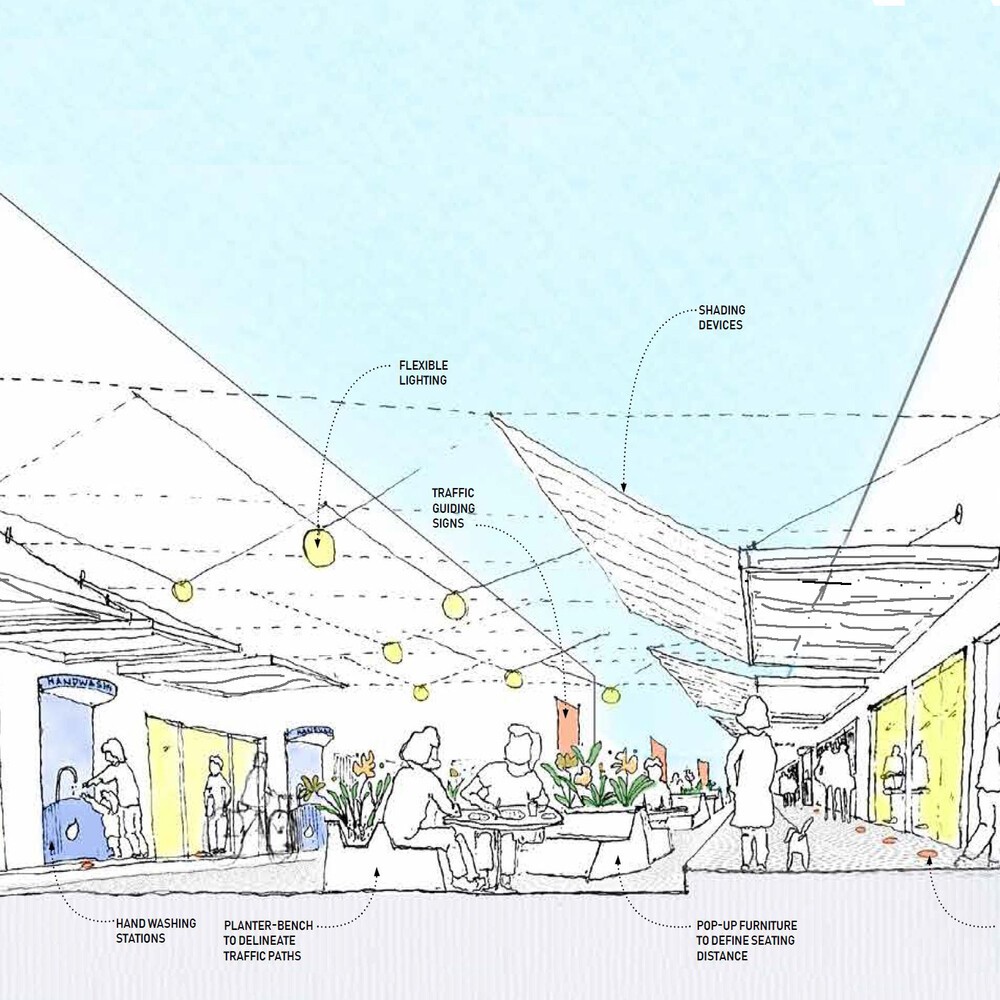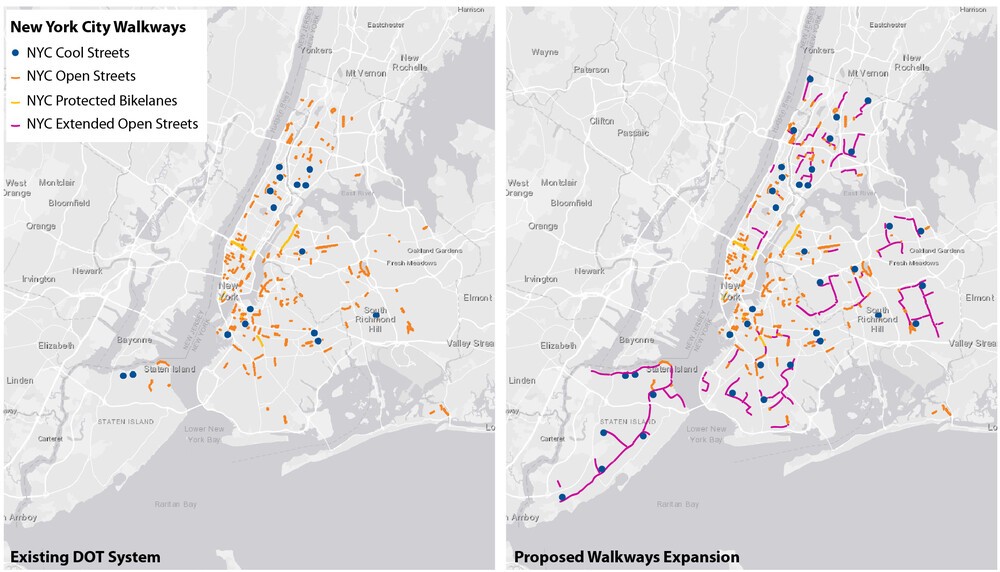City Life After Corona: Mobility
Walkways: Rediscovering a Mass Mode of Transportation
Question:
Movement of people was abruptly halted due to the pandemic, especially in bustling cities like NYC where the subway and buses are essential modes of transportation. As we enter the fall, how can we plan future investments and envision alternative patterns of mobility within our city?
---
In response to the Covid-19 pandemic, the Urban Design Forum launched City Life After Coronavirus, a digital program convening Fellows and international experts to document global responses to the current crisis and to strategize a road to recovery for New York City. In April, we released a Call for Ideas to our network soliciting a broad range of submissions that envision how urban planning and design should change in the wake of Covid-19 as we strive to build a more just city for all New Yorkers. We are featuring some of the most compelling ideas in a series of reflections and proposals about diverse topics like education, community engagement, and mobility. Explore the full Gallery of Urban Ideas here.
---
WALKWAYS: REDISCOVERING A MASS MODE OF TRANSPORTATION
by Jonathan J. Marvel, and Yadiel Rivera-Díaz
For years, urbanists, architects and community groups have been advocating for the prioritization of pedestrians in the design of streets and the public realm, although by in large motorized vehicles have remained the main protagonists. The discussion invariably centers around mobility, and ultimately vehicles remain our primarily means of transportation.
In the last two months of social distancing and business closures in NYC we have experienced a different kind of street, a shift in its primary role, from moving vehicles to moving pedestrians. As vehicular traffic has diminished, and social distancing has increased the spatial needs of pedestrians, the disproportionate and inequitable amount of street space dedicated to vehicles has been exposed for all to see.
Walking to places is our newly rediscovered mass mode of transportation, and streets are the routes we take. For many in the city, the extent of travel has contracted to the range of our longest walks taken around our homes. This moment is an opportunity to permanently reclaim more street space for pedestrians.
Expanding the network of public spaces the city has to offer, safely linking parks and neighborhoods for pedestrians will improve the city’s health and its people’s health. It’s time we reassert walking as a serious and important mode of mobility that deserves smarter and more widespread planning.
The concept of reclaiming streets for pedestrians has been slowly but steadily building. New York City has seen the pedestrianization of many streets including Broadway, lowered vehicular use streets like the now bus-only Fulton St in Downtown Brooklyn, and of course the widespread new networks of parklets and bike lanes.

Marvel Architects has been active for decades in rethinking NYC streetscapes to prioritize pedestrians. Recently, Marvel has been working with Union Square Partnership developing a plan to fully transform the square into an expanded pedestrian friendly district. This will include the pedestrianization of roadways, road diets and pedestrian safety measures.
We have developed goals and design principles that are applicable not only to areas with high-density or high-visitation rates, but equally in less busy neighborhoods. Every resident of New York City, in all boroughs, needs safe walking routes to parks, grocery stores and other essential needs.
To reimagine “City Life After Coronavirus” we must identify and draw these routes for every neighborhood in the city. To develop a map, similar to the one used to identify subway and bus routes, but for safely walking through the city. It will also indicate potential future extensions and connections.
The space of the street will play a key role as we transition to a post-pandemic city; it is the space where people will queue to wait for food, to enter banks, to get groceries; it is the space where you’ll wait for your turn at the doctor, or to get to a store; it is our gyms and daycares. The implementation of this plan has started with the city’s Open Streets program, but we need to quickly develop a plan that ensures these routes are made permanent and the space of the street is returned to whom it has always belonged, to the people.
--
Marvel Architects is a solutions-driven design practice that integrates context and nature into every project, meeting each design challenge by listening to its surroundings. With offices in New York and San Juan, Marvel is an international firm dedicated to creativity and diversity. From the New Jersey Institute of Technology to St. Ann’s Warehouse, the team has pioneered an entrepreneurial approach to architecture and place-making that has been recognized by over 135 industry design awards including the AIA’s highest honors.
